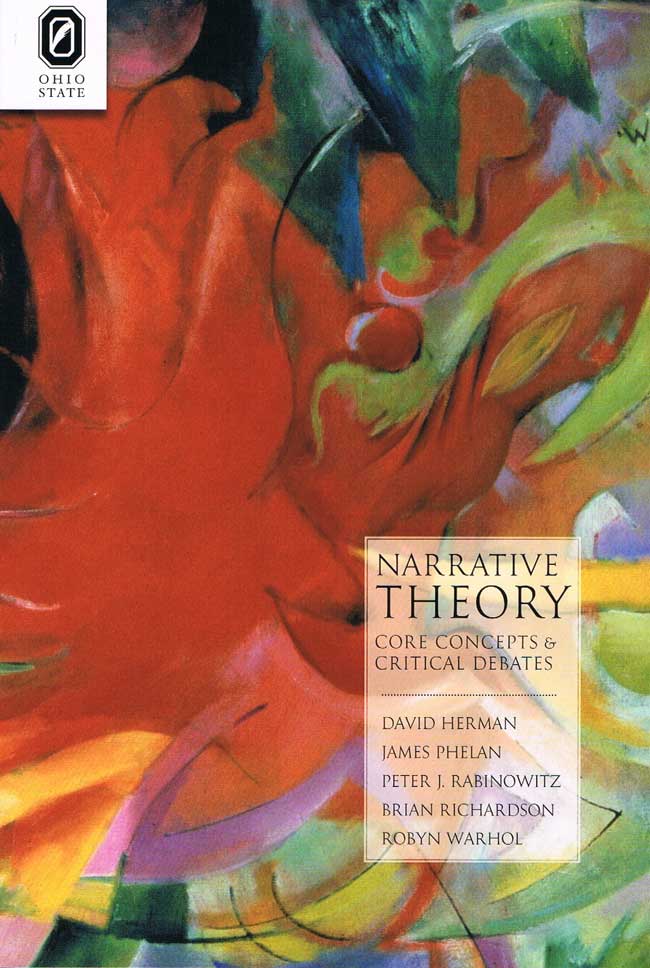|
A Choice 2012 Outstanding Academic Title Narrative TheoryCore Concepts and Critical DebatesDavid Herman, James Phelan and Peter J. Rabinowitz, Brian Richardson, and Robyn WarholTheory and Interpretation of Narrative |
$29.95 PDF eBook 978-0-8142-7611-2 Review/Change Shopping Cart & Check-out | |||
|
Table of Contents
Explore More The Living Handbook of Narratology Manfred Jahn’s Narratology: A Guide to the Theory of Narrative |
“This aptly titled book is a wonderful resource for introducing students to four major approaches to the study of narrative and the major debates on the subject of narrative. . . . [T]he genius of this volume—and what sets it apart from the various competing introductions to narrative theory—is its structure. In the first section of this book, the authors introduce the readers to four approaches to the study of narrative: rhetorical (James Phelan and Peter Rabinowitz), feminist (Robyn Warhol), mind-oriented (Herman), and unnatural/anti-mimetic (Brian Richardson). In the second section, each author responds to the analyses in the previous section. As such, the book works as a conversation . . . This is the most dynamic introduction to narrative theory in print. It will work well for all academic readers and it is a must-have for any scholar working in narrative theory.” —Choice “Narrative Theory: Core Concepts and Critical Debates is organized in a supple, intellectually meaningful, and reader-friendly way. There are several good books about narrative, but I know of no book like this one. It will certainly be of interest to students of narrative—across disciplines—and of narrative theory.” —Gerald Prince, professor of Romance languages, University of Pennsylvania Narrative Theory: Core Concepts and Critical Debates addresses two frequently asked questions about narrative studies: “what is narrative theory?” and “how do different approaches to narrative relate to each other?” In engaging with these questions, the book demonstrates the diversity and vitality of the field and promotes a broader dialogue about its assumptions, methods, and purposes. In Part One, the co-authors explore the scope and aims of narrative from four distinct perspectives: rhetorical (Phelan and Rabinowitz), feminist (Warhol), mind-oriented (Herman), and unnatural (Richardson). Using case studies (Huckleberry Finn, Persuasion, On Chesil Beach, and Midnight’s Children, respectively), the co-authors explain their different takes on the same core concepts: authors, narrators, narration; plot, time, and progression; space, setting, and perspective; character; reception and the reader; and narrative values. In Part Two, the co-authors respond to one another’s views. As they discuss the relation of the approaches to each other, they highlight significant current debates and map out key developments in the field. Accessibly written, Narrative Theory can serve as the basis for a wide range of courses, even as its incisive presentation of four major approaches and its lively give-and-take about the powers and limitations of each make the book an indispensable resource for specialists. David Herman, James Phelan, and Robyn Warhol are faculty members in the Department of English at
The Ohio State University,
Peter J. Rabinowitz in the Department of Comparative Literature at Hamilton College, and Brian
Richardson in the Department of English at the University of Maryland. | |||



